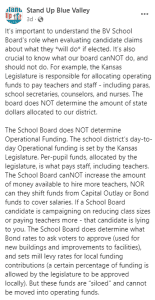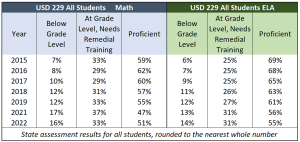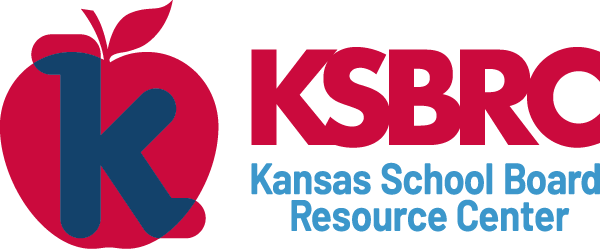Stand Up Blue Valley, a lobbying group that primarily works to elect legislators who will vote to raise taxes and increase school funding, has a rich tradition of misleading voters (see here, here, here, and here for examples), and they are at it again.

A recent social media post by SUBV falsely says, “The school board cannot increase the amount of money available to hire more teachers.” State funding is determined by a formula, but each local school board decides how to spend the money.
The school board has complete authority to allocate discretionary funding, whether to hire teachers, increase teacher pay, hire administrators, buy supplies, etc. School boards can also decide to reduce management staffing (for example) and reallocate the spending.
Blue Valley has 21,888 students and 182.5 managers(superintendent, deputy and assistant superintendents, principals, assistant principal, directors and executive directors, instruction coordinators, and curriculum specialists), or 119.9 students per manager. Shawnee Mission has 172 students per manager. If the Blue Valley board restructured management to the Shawnee Mission ratio, it would have 55 fewer managers.
If the all-in cost per manager (payroll, benefits, and payroll taxes) is $145,000, the Blue Valley board could save a little over $8 million and use that money for other purposes.
A local school board can also increase the Local Option Budget to a maximum 33% to collect more property tax and spend some of the money as it wishes. Per K.S.A. 72-5143, portions of the local option budget proportional to the district’s total foundation aid attributable to weightings for at-risk and bilingual funding must be transferred to those funds. But within those funds, the money can be used, for example, to hire teachers and give pay increases.
Finally, local schools can use some of their carryover cash reserves to spend in addition to the current year’s funding. Blue Valley’s operating cash reserves jumped from about $28 million in 2005 to $63 million in 2022, and most of the increase comes from state and local funding that was not spent in prior years.
School boards are in charge, not district staff or the superintendent
Stand Up Blue Valley also says board members should take a ‘hands off’ approach and “leave the experts to teach and administer.” Board members needn’t be involved in every day-to-day activity, but they cannot take a ‘hands off’ approach and hope that student achievement improves. That is not just a moral responsibility.
According to state law, “The board shall have authority to prescribe courses of study for each year of the school program and to adopt rules and regulations for teaching in the school district and general government thereof, and to approve and adopt suitable textbooks and study material for use therein subject to the plans, methods, rules and regulations of the state board of education.” The Blue Valley Policy #1100 elaborates on the board’s authority and responsibility:
The Board, as the governing body of the District, shall accept full responsibility for the general operation, management, and control of the District. In governing the District, the Board shall act in a policy-making capacity. It shall exercise executive, legislative, and judicial authority in order to promote the best interests of the District. The Board shall retain the power to alter or veto the acts of any of its employees when such acts are deemed contrary to the legal policies or goals, or contrary to the legal obligations of the District, inconsistent with Board policies or goals, or contrary to the best interests of the District.

The Kansas Department of Education’s student achievement goal is for 75% of students to be proficient in reading and math. Blue Valley is well short of those goals and proficiency levels have declined since 2015, making it imperative for the board to identify barriers to students being proficient, make the necessary operational and budgetary changes to overcome those barriers, and hold the staff accountable for making consistent progress toward the 75% goal.
State law requires each school board to annually identify the barriers to proficiency in every school, make the appropriate budgetary changes, and specify the number of years it will take to achieve the targeted proficiency level, but Blue Valley does not adhere to that law.
An investigation by the Sentinel’s parent company, Kansas Policy Institute, found that the Blue Valley district does not permit board members to conduct needs assessments; board members are only allowed to review staff-prepared reports with no evidence of budgetary changes having been made and some of the targets are unrealistic.
For the school year just ended, every building report says, “The District has a goal of moving 55% to levels 3 or 4 in math and 65% in ELA for FY 2022-23. Based on the anticipated trajectory (from their reviews), the District goal will be to have 75% at levels 3 or 4 in 5-6 years.” The law requires an estimate for each building, however.
The proficiency listing below shows that most elementary school targets were set lower than actual performance for 2022 and many of the targets in middle school and high school are unattainable. For example, Aubry Bend Middle School is expected to jump 38% proficient in math to 55% in one year. Blue Valley West High would have to go from 44% proficient in English Language Arts to 65% in one year.

Neither the needs assessment reports nor the district budget indicate how or if resources were re-allocated to middle schools and high schools that are far below proficiency targets, which is exactly why school boards cannot take the ‘hands off’ approach for which Stand Up Blue Valley advocates. Students need board members who drive the district to improve achievement, not to leave the system to do as it wishes.






